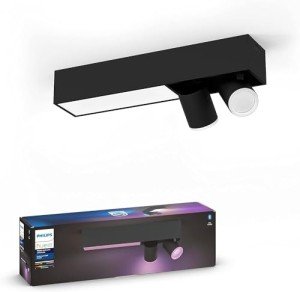20 Reasons Why Contemporary Lighting UK Cannot Be Forgotten
Contemporary Lighting in the UK: Transforming Spaces with Illumination
Lighting plays a crucial function in specifying the atmosphere and performance of any space. In the UK, contemporary lighting has emerged as a substantial design component, providing ingenious solutions that mix aesthetic appeals with practicality. Table Lamps UK looks into the various styles, materials, and technologies shaping contemporary lighting, along with pointers for selecting the most suitable fixtures for numerous settings.
The Evolution of Contemporary Lighting
Contemporary lighting in the UK shows the changing tastes and technological improvements in design. It encapsulates a wide selection of styles, including:
Minimalist: Characterized by simpleness and clean lines, minimalist lighting fixtures concentrate on kind and function without unnecessary decorations.
Industrial: Inspired by city settings, industrial lighting integrates raw materials like metals and woods with strong styles, developing edgy, practical pieces.
Scandinavian: Known for its warmth and simpleness, Scandinavian lighting often includes soft colors and natural materials, focusing on developing a relaxing atmosphere.
Smart Lighting: This modern pattern incorporates technology with style, allowing users to control their lighting with mobile apps, voice commands, or automation systems.
To highlight the evolution and variety in the field of contemporary lighting, think about the table listed below, which highlights essential attributes of various designs.
Style
Secret Characteristics
Popular Materials
Perfect Spaces
Minimalist
Easy, functional designs
Metal, glass, wood
Modern homes, workplaces
Industrial
Raw, unfinished appearance
Steel, concrete, wood
Lofts, galleries
Scandinavian
Relaxing, warm aesthetics
Natural fibers, light wood
Living rooms, coffee shops
Smart
Integrated technology, automation
Varies widely
Homes, offices, retail areas
Choosing Contemporary Lighting Fixtures
Choosing the right lighting fixtures for a space needs mindful consideration of numerous factors. Here are crucial elements to keep in mind:
1. Purpose of the Space
Before choosing fixtures, think about the intended use of the location. Various functions require various types of lighting:
- Task Lighting: Focused lighting for activities such as reading, cooking, or studying. Examples consist of table lamps and under-cabinet lights.
- Ambient Lighting: General lighting that supplies total illumination. Ceiling lights and pendant fixtures fall under this classification.
- Accent Lighting: Designed to highlight specific features or areas, such as art work or architectural information. Wall sconces and mounted lights prevail options.
2. Design and Theme
The lighting must complement the existing design. Go with fixtures that match or enhance the overall style of the space, whether it's contemporary, rustic, or eclectic.
3. Size and Scale
Consider the proportion of the lighting fixtures relative to the area. A big chandelier may look stunning above a large dining table, while smaller pendant easy work well in compact settings.
4. Energy Efficiency
With rising energy expenses and ecological issues, choosing energy-efficient lighting alternatives is important. LED lights are an excellent choice, providing durability and lower energy consumption.
5. Flexibility
In modern design, versatility is essential. Fixtures that can be adjusted or repositioned enhance functionality, allowing users to create different environments as required.
Popular Contemporary Lighting Brands in the UK
The contemporary lighting market in the UK boasts numerous brand names known for their innovative designs and quality workmanship. Some notable discusses consist of:
- FLOS: An Italian brand celebrated for its artistic and renowned lighting fixtures that often double as pieces of art.
- Tom Dixon: A British designer recognized for his modern, industrial styles that beautifully incorporate metal and light.
- Anglepoise: Known for its versatile, practical lamps, ideal for a variety of settings from office to imaginative studios.
- John Lewis: Offers a variety of contemporary lighting services that cater to a wider audience, consisting of affordable yet elegant alternatives.
FAQs about Contemporary Lighting in the UK
1. What is contemporary lighting?
Contemporary lighting refers to lighting designs and fixtures that reflect present design patterns, frequently identified by clean lines, innovative shapes, and using modern products and innovations.
2. How do I select the right lighting for my home?
Consider the purpose of the room, existing décor, size of fixtures, energy effectiveness, and flexibility. Evaluate how each piece will contribute to the overall ambiance and functionality of your area.
3. What are some energy-efficient lighting alternatives readily available in the UK?
LED lights are the most popular energy-efficient alternative, understood for their long lifespan and low energy intake. Buy Lighting Fixtures UK (CFLs) and halogen bulbs are other alternatives.
4. Where can I look for contemporary lighting in the UK?
Contemporary lighting can be found in different retail outlets, both online and in physical stores. Notable sellers consist of John Lewis, Habitat, and specialized lighting stores.
5. Can contemporary lighting operate in traditional areas?
Absolutely! Contemporary lighting can improve traditional areas when selected thoughtfully. Selecting fixtures with a balance in between modern and traditional aspects can create a harmonious design.
Contemporary lighting in the UK represents more than just illumination; it embodies style innovation and imagination, changing areas and improving functionality. As patterns continue to evolve, house owners and designers alike can check out an expansive variety of designs and technologies, making sure that every room bursts with life, warmth, and character. By considering the vital factors laid out in this post, one can curate a collection of lighting fixtures that resonates with personal style and meets useful requirements, ultimately forming comfortable and visually enticing environments.
